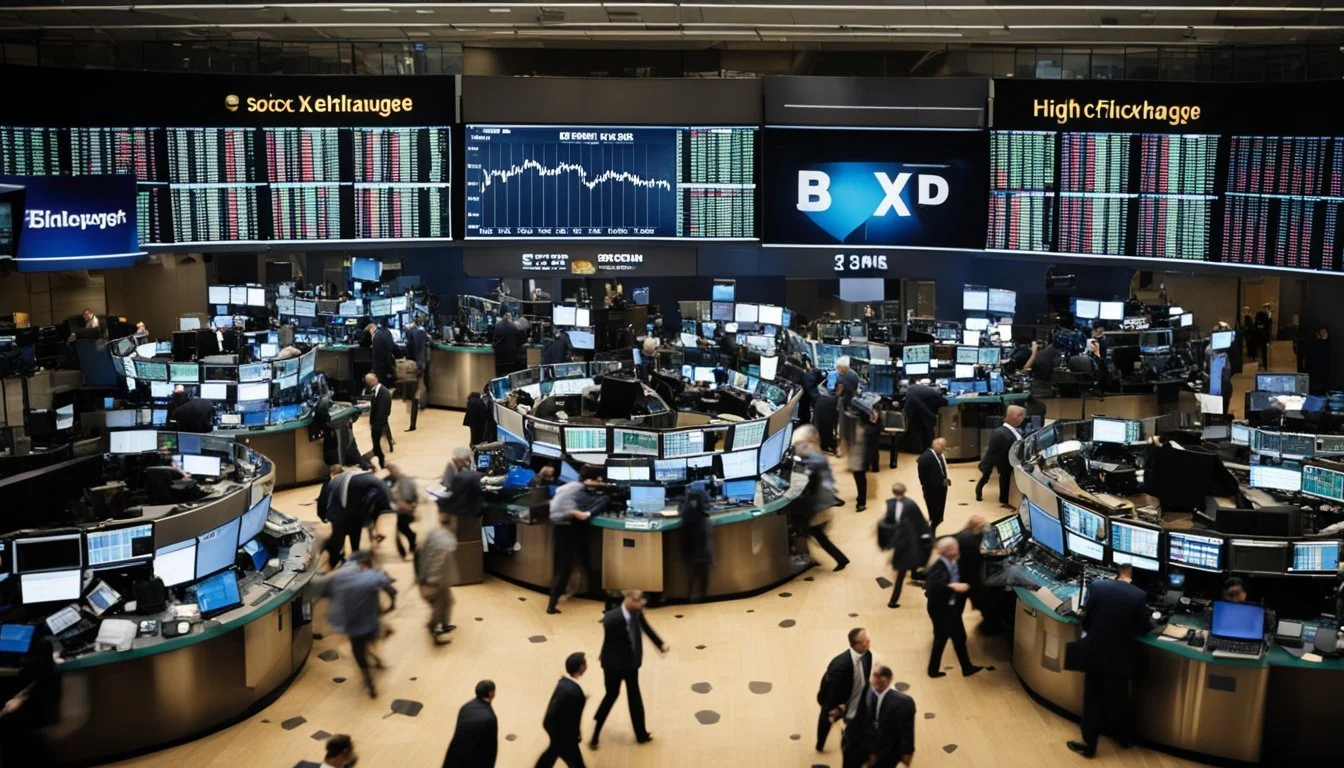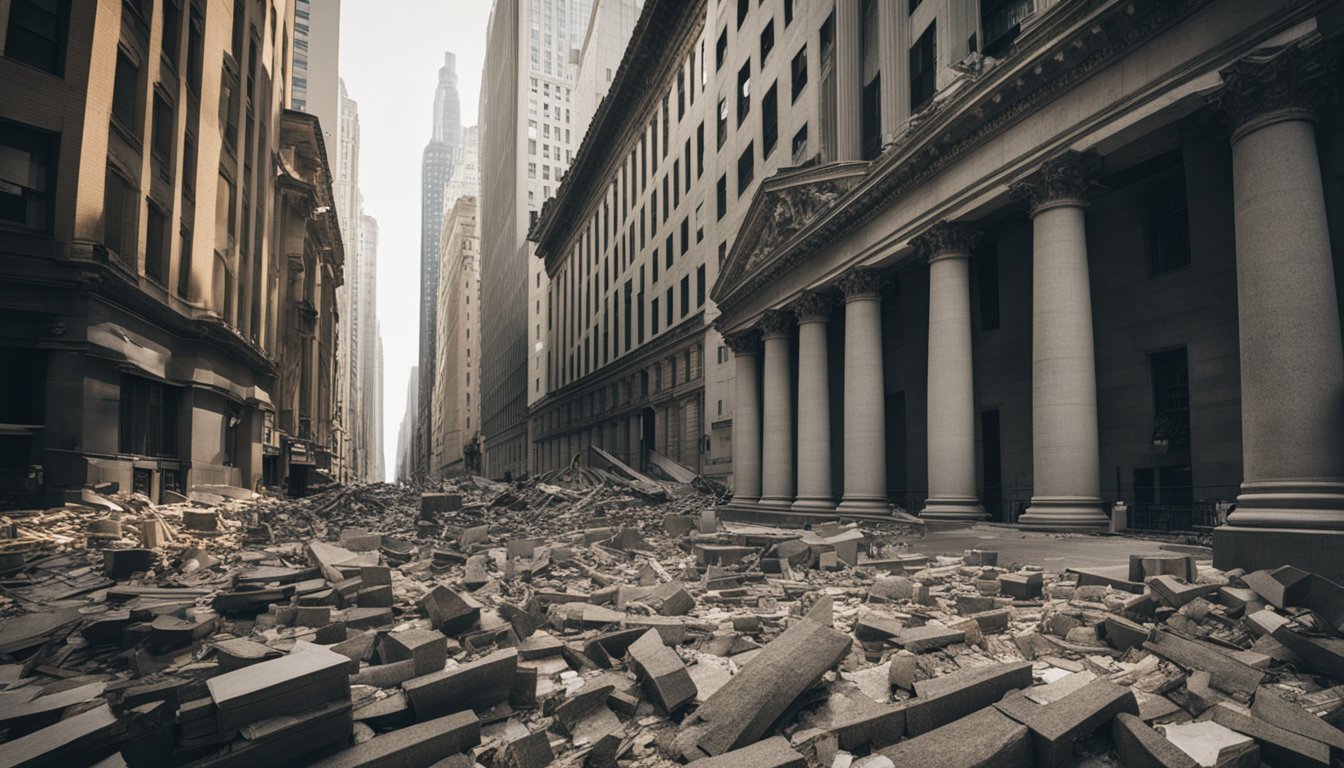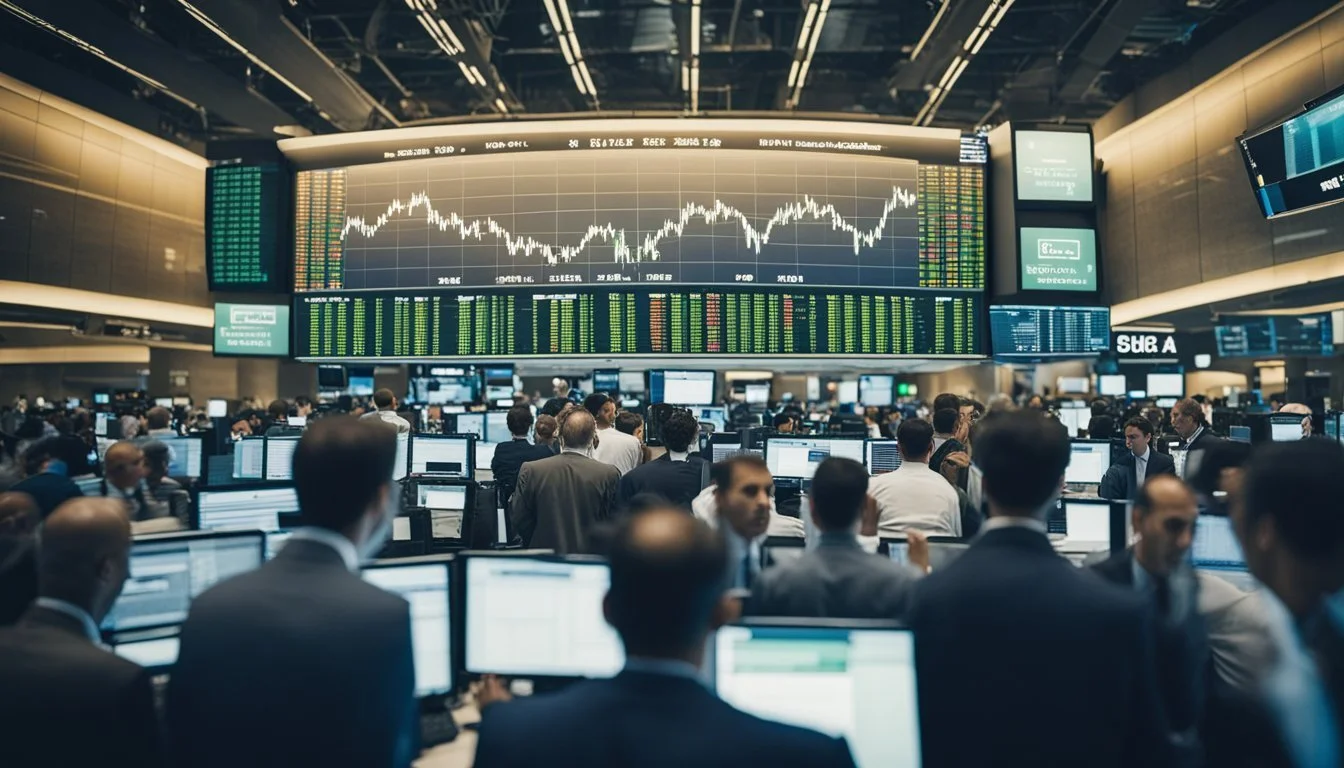10 Crash Course Documentaries on the 1929 Stock Market Crash
Essential Viewing for Understanding the Great Depression
The 1929 stock market crash marked a pivotal moment in American economic history, ushering in the Great Depression and reshaping the financial landscape for decades to come. This catastrophic event has been the subject of numerous documentaries, offering viewers insights into the factors that led to the crash and its far-reaching consequences.
For those seeking to deepen their understanding of this significant historical event, crash course documentaries provide a concise yet informative overview. These educational films explore the unbridled optimism of the 1920s, the speculative frenzy that gripped Wall Street, and the eventual collapse that sent shockwaves through the global economy. From expert interviews to archival footage, these documentaries offer a comprehensive look at one of the most impactful financial crises in modern history.
1) "Black Tuesday: October 29, 1929" - Finance Monthly (2018)
"Black Tuesday: October 29, 1929" is a concise documentary produced by Finance Monthly. It focuses on the most catastrophic day of the 1929 stock market crash.
The film explores the events leading up to Black Tuesday, when panic selling reached its peak. It details how over 16 million shares were traded on the New York Stock Exchange in a single day.
Viewers learn about the massive losses incurred by investors and the widespread financial devastation. The documentary examines the immediate aftermath and the beginning of the Great Depression.
Expert interviews provide insights into the economic factors that contributed to the crash. The film also discusses the long-term impact on American society and global markets.
"Black Tuesday" offers a clear, factual account of this pivotal moment in financial history. It serves as an educational resource for those interested in understanding stock market dynamics and economic cycles.
More information on Finance Monthly documentaries
2) "The Great Crash 1929" - John Kenneth Galbraith (1955)
John Kenneth Galbraith's "The Great Crash 1929" offers a comprehensive analysis of the 1929 stock market collapse. The book examines the factors that led to the crash and its devastating aftermath.
Galbraith, a renowned economist, argues that rampant speculation in the stock market precipitated the crash. He highlights the widespread belief among participants that they could become wealthy without effort.
The author provides insights into the economic conditions of the 1920s that set the stage for the disaster. He discusses the role of banks, investment trusts, and other financial institutions in fueling the speculative bubble.
Galbraith's work stands out for its clear and engaging prose. He combines historical analysis with economic theory to create a compelling narrative of the events leading up to and following the crash.
"The Great Crash 1929" remains a definitive account of one of the most significant economic events in modern history. It offers valuable lessons for understanding financial crises and the dangers of unchecked market speculation.
More information on "The Great Crash 1929"
3) "The Stock Market Crash of 1929" - Breakthroughs in History
This documentary provides a comprehensive look at the events leading up to and following the 1929 stock market crash. It examines the economic and social factors that contributed to the crash, including rampant speculation and overvaluation of stocks.
The film explores the immediate aftermath of the crash, detailing how it affected individuals and businesses across the United States. It highlights the widespread bank failures and job losses that followed, setting the stage for the Great Depression.
Expert historians and economists offer insights into the long-term consequences of the crash. They discuss how it reshaped economic policies and led to increased government regulation of financial markets.
The documentary uses archival footage and photographs to bring the era to life. It includes interviews with descendants of those who lived through the crash, providing personal perspectives on this pivotal moment in American history.
More information on "The Stock Market Crash of 1929" (2009)
4) "Path to Wall Street Crash" - PBS American Experience (2012)
This PBS American Experience documentary explores the events leading up to the 1929 stock market crash. It examines the economic and social factors that contributed to the financial disaster.
The film delves into the post-World War I economic boom in the United States. It highlights how technological advancements and mass production fueled consumer spending and stock market speculation.
Experts discuss the role of unregulated banking practices and easy credit in creating an unsustainable economic bubble. The documentary also explores how income inequality and wealth concentration affected market stability.
Through archival footage and interviews, the film paints a vivid picture of the Roaring Twenties. It shows how overconfidence and reckless investing set the stage for the eventual crash.
The documentary provides insight into the mindset of investors and financial institutions during this period. It explains how their actions collectively pushed the market to unsustainable heights.
More information on PBS American Experience
5) "Seeds of Panic: The Crash of 1929" - History HDTV (2009)
This documentary from History HDTV offers a detailed examination of the events leading up to the 1929 stock market crash. It explores the economic and social factors that contributed to the financial disaster.
The film covers the rapid economic growth of the 1920s, known as the "Roaring Twenties." It highlights how this period of prosperity led to widespread speculation in the stock market.
Experts featured in the documentary explain the risky investment practices that became common during this time. They discuss how these practices ultimately contributed to the market's instability.
The documentary also explores the immediate aftermath of the crash. It details how the panic spread and affected various sectors of the economy.
"Seeds of Panic" provides viewers with a comprehensive understanding of this pivotal moment in American financial history. It serves as an informative resource for those interested in economic history and the causes of financial crises.
More information about the documentary
6) "Boom to Bust: A 1929 Financial Story" - National Geographic (2009)
National Geographic's "Boom to Bust: A 1929 Financial Story" offers a compelling look at the events leading up to and following the 1929 stock market crash. The documentary uses archival footage and expert interviews to paint a vivid picture of the era's economic landscape.
The film explores the rapid economic growth of the 1920s, detailing how this prosperity contributed to overconfidence in the stock market. It examines the factors that led to the market's eventual collapse, including widespread speculation and unsustainable lending practices.
"Boom to Bust" also delves into the immediate aftermath of the crash, highlighting its devastating impact on everyday Americans. The documentary provides insights into how the crash affected various sectors of society, from Wall Street bankers to farmers and factory workers.
The film discusses the long-term consequences of the crash, including the Great Depression that followed. It examines the government's response to the crisis and the economic policies implemented in its wake.
More information about the documentary
7) "Crash of '29" - BBC Documentary (1990)
The BBC's "Crash of '29" offers a compelling examination of the 1929 stock market crash. This documentary provides viewers with a detailed look at the events leading up to Black Thursday and its aftermath.
Experts and historians share insights on the economic factors that contributed to the crash. The film explores how speculation and margin buying fueled the market's rapid rise and subsequent collapse.
Archival footage and photographs bring the era to life, showing the panic on Wall Street and its impact on everyday Americans. The documentary also covers the political response and attempts to stabilize the economy.
"Crash of '29" highlights key figures like President Herbert Hoover and influential bankers of the time. It examines their roles and decisions during this pivotal moment in financial history.
The film draws parallels between the 1929 crash and modern economic challenges, offering valuable lessons for today's viewers.
More information on "Crash of '29" - BBC Documentary
8) "1929: The Great Crash" - Channel 4 (2009)
"1929: The Great Crash" is a documentary that explores the causes and consequences of the 1929 Wall Street Crash. The film focuses on the six days in October when the New York Stock Exchange experienced a devastating collapse.
The documentary provides a detailed account of how share prices plummeted by a third, resulting in a loss of over $25 billion in individual wealth. It examines the factors that led to this financial catastrophe, including rampant speculation and excessive borrowing.
Eyewitness testimonies offer personal perspectives on the crash's impact. The film also discusses the aftermath, including the failure of three thousand banks and the loss of people's savings.
"1929: The Great Crash" presents a comprehensive look at one of the most significant financial events in modern history. It highlights the lasting effects of the crash on the global economy and society.
9) "Wall Street in Ruins" - History Channel (2009)
This History Channel documentary offers a vivid portrayal of the aftermath of the 1929 stock market crash. It paints a stark picture of the financial district's transformation from a symbol of prosperity to one of despair.
The film uses archival footage and expert interviews to depict the chaos that engulfed Wall Street. It shows panicked investors, failed banks, and the sudden loss of fortunes that occurred in October 1929.
"Wall Street in Ruins" examines the factors that led to the crash, including reckless speculation and lack of financial regulations. It also explores the wider economic impact, as the effects rippled outward from New York to the rest of the country.
The documentary highlights key figures involved in the crash and its aftermath. It covers the responses of political and financial leaders as they grappled with the unfolding crisis.
Viewers gain insight into how the crash reshaped American finance and led to new safeguards in the financial system. The film serves as a cautionary tale about the potential consequences of unchecked market exuberance.
More information on the History Channel
10) "1929 Stock Market Crash Explained" - Simple History (2018)
Simple History's video provides a concise overview of the 1929 Stock Market Crash. It covers the key events leading up to the crash and its immediate aftermath.
The video begins by setting the scene of the Roaring Twenties, a period of economic prosperity and cultural dynamism in the United States. It then explains how excessive speculation and buying stocks on margin contributed to an unsustainable market bubble.
The narrative moves on to describe Black Thursday (October 24, 1929) and Black Tuesday (October 29, 1929), when panic selling caused stock prices to plummet. The video illustrates the impact on investors and the broader economy.
Simple History's explanation includes the role of banks and the subsequent economic downturn that led to the Great Depression. It presents complex economic concepts in an accessible manner, making it suitable for viewers seeking a quick understanding of this pivotal historical event.
More information on Simple History's "1929 Stock Market Crash Explained"
Historical Context
The 1929 stock market crash occurred during a period of economic expansion and speculative fervor in the United States. Key factors included loose monetary policy, excessive margin buying, and a disconnect between stock valuations and economic fundamentals.
Economic Conditions Before the Crash
The 1920s, known as the "Roaring Twenties," saw unprecedented economic growth in the United States. Consumer spending increased dramatically, fueled by new technologies and mass production techniques. The automobile industry boomed, with car ownership rising from 8 million in 1920 to 23 million by 1929.
Stock prices soared, driven by speculation and easy credit. The Dow Jones Industrial Average quadrupled between 1924 and 1929. Many Americans invested heavily in stocks, often using borrowed money.
Banks engaged in risky lending practices, offering low-interest loans to speculative investors. This created a bubble in the stock market, with prices far exceeding companies' actual values.
Policy Decisions Leading Up to the Crash
The Federal Reserve played a significant role in the lead-up to the crash. In 1927, the Fed lowered interest rates to help Britain maintain its gold standard. This action made borrowing cheaper and fueled further stock market speculation.
The Fed failed to curb excessive margin buying, where investors purchased stocks with borrowed money. Margin requirements were as low as 10%, allowing investors to buy $1,000 worth of stock with just $100 down.
Government policies favored big business and wealthy investors. Tax cuts disproportionately benefited the rich, while regulations on banks and the stock market remained lax.
Policymakers largely ignored warnings about the overvalued market. Few measures were taken to address the growing economic imbalances or to prepare for a potential downturn.
Key Events of the 1929 Stock Market Crash
The stock market crash of 1929 unfolded over several tumultuous days in October. Panic selling and plummeting stock prices marked this pivotal event in financial history.
Black Thursday
On October 24, 1929, the stock market experienced a massive sell-off. Investors dumped 12.9 million shares, causing prices to plummet. The ticker tape fell hours behind, leaving traders in the dark about current prices.
Wall Street bankers attempted to stabilize the market by buying large blocks of stocks. Their efforts temporarily halted the decline, but investor confidence had been shaken.
Black Monday and Black Tuesday
October 28 and 29, 1929 saw the crash reach its crescendo. On Monday, the market fell 13% despite attempts by bankers to prop up prices.
Tuesday brought even more severe losses. The Dow Jones Industrial Average dropped 12% as panicked investors sold 16.4 million shares. By the end of the day, $14 billion in stock value had evaporated.
Banks that had lent money for stock purchases began calling in loans, forcing even more selling. The crash wiped out thousands of investors and ushered in the Great Depression.
Aftermath and Consequences
The 1929 stock market crash triggered severe economic repercussions in the United States and around the world. Its effects reverberated for years, fundamentally altering economic policies and social structures.
Impact on the U.S. Economy
The crash wiped out billions in wealth almost overnight. Banks failed as panicked customers rushed to withdraw their savings. By 1933, nearly half of all U.S. banks had closed. Unemployment skyrocketed from 3% in 1929 to 25% in 1933.
Industrial production plummeted by 47% between 1929 and 1933. Farm incomes fell by over 50%. Deflation set in, with prices dropping 30% between 1929 and 1932.
The crash ushered in the Great Depression, a period of economic hardship lasting until World War II. President Franklin D. Roosevelt's New Deal programs aimed to provide relief and stimulate recovery.
Global Repercussions
The crash's impact spread beyond U.S. borders. International trade declined sharply as countries imposed tariffs to protect domestic industries. Global GDP fell by 15% between 1929 and 1932.
Europe, still recovering from World War I, was hit hard. Germany, burdened by war reparations, saw its fragile economy collapse. This economic turmoil contributed to the rise of extremist political movements.
Many countries abandoned the gold standard to combat deflation. The crash led to increased government intervention in economies worldwide, marking a shift away from laissez-faire capitalism.



